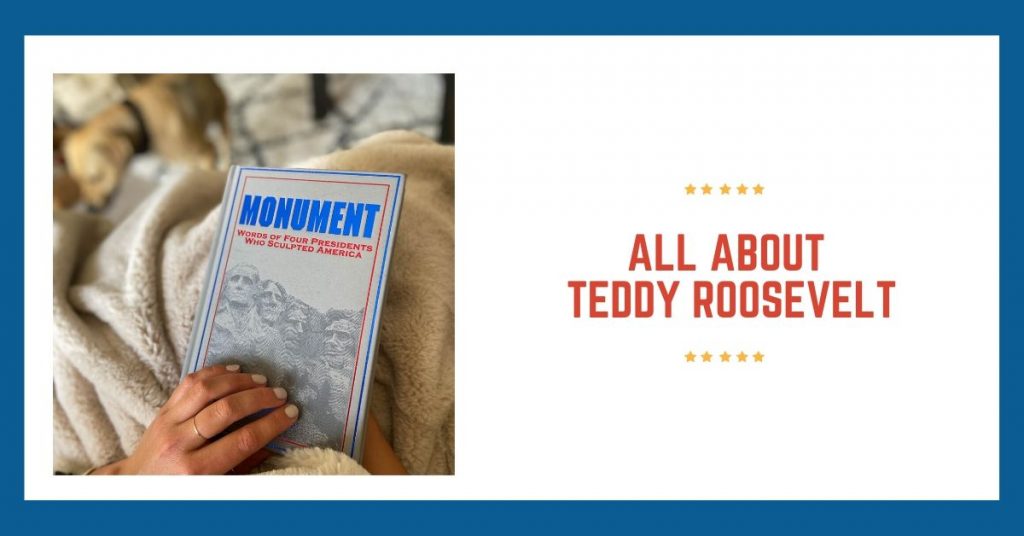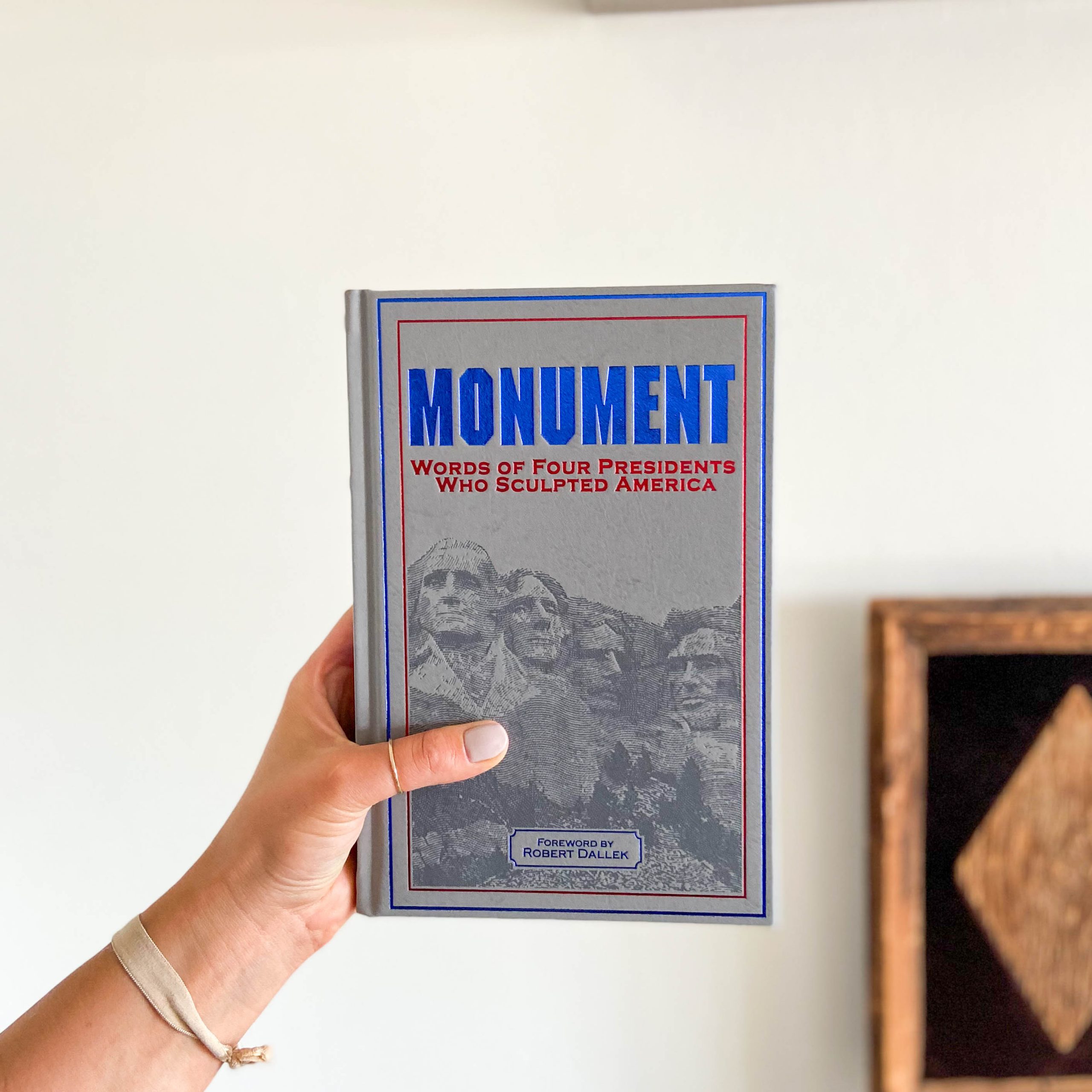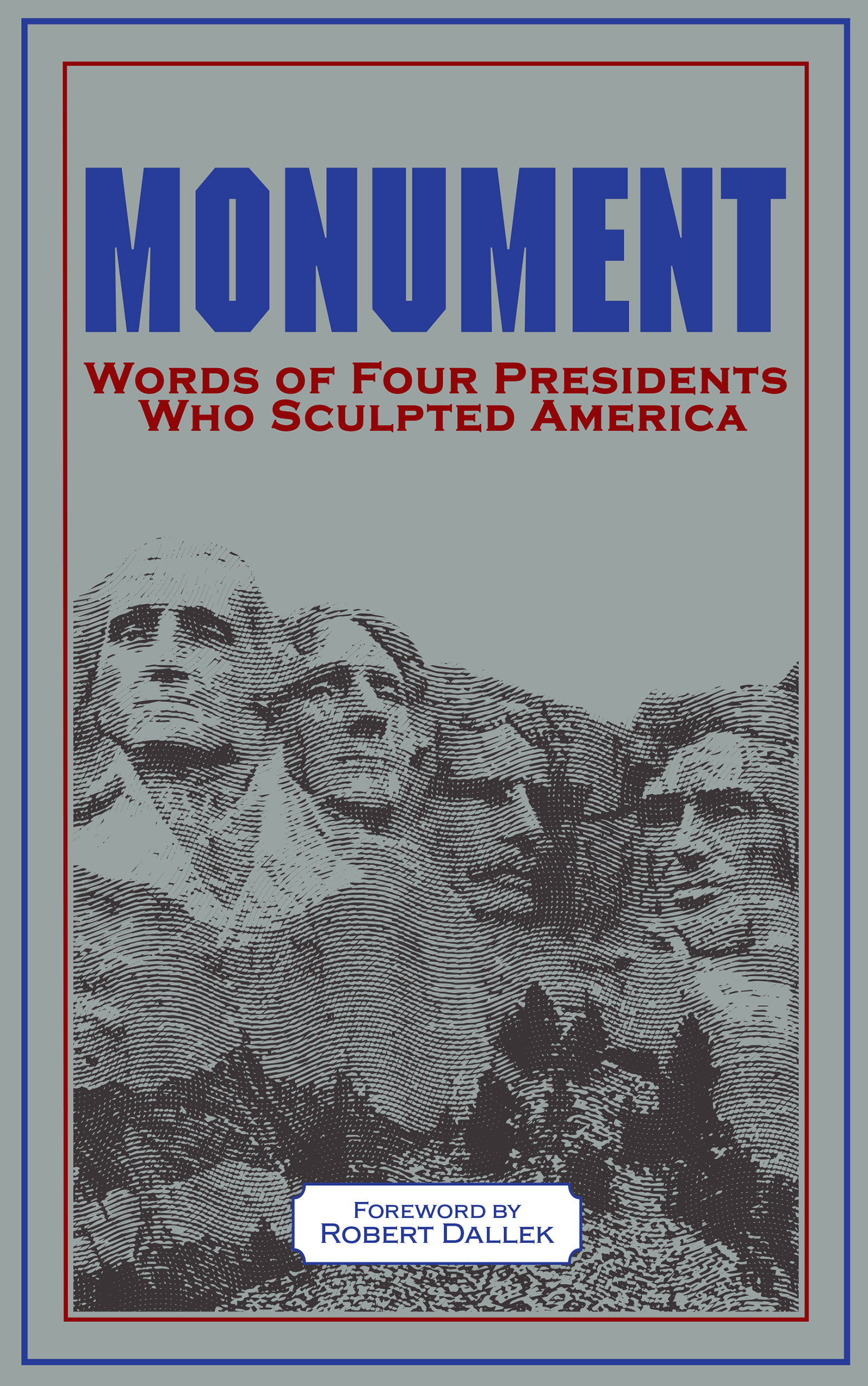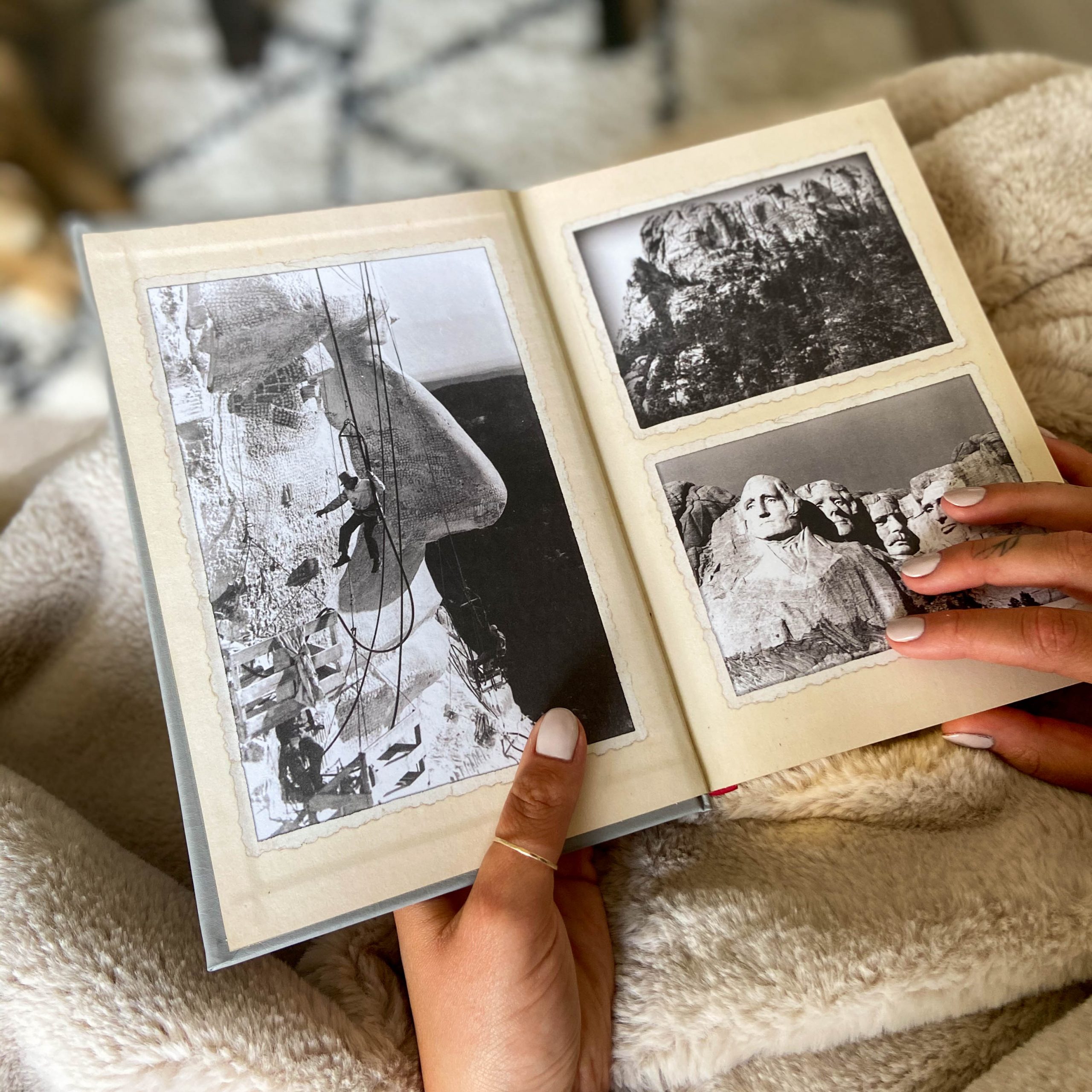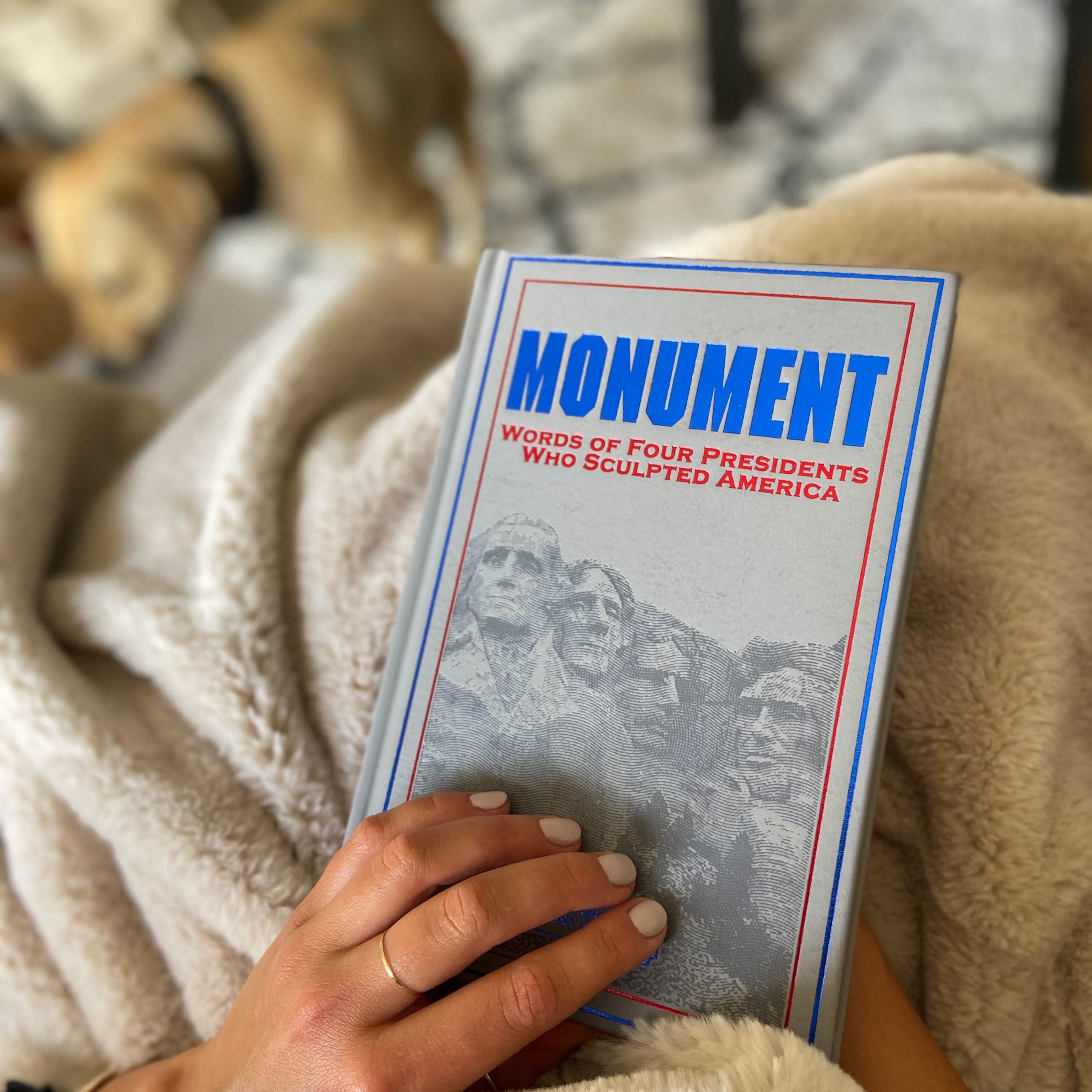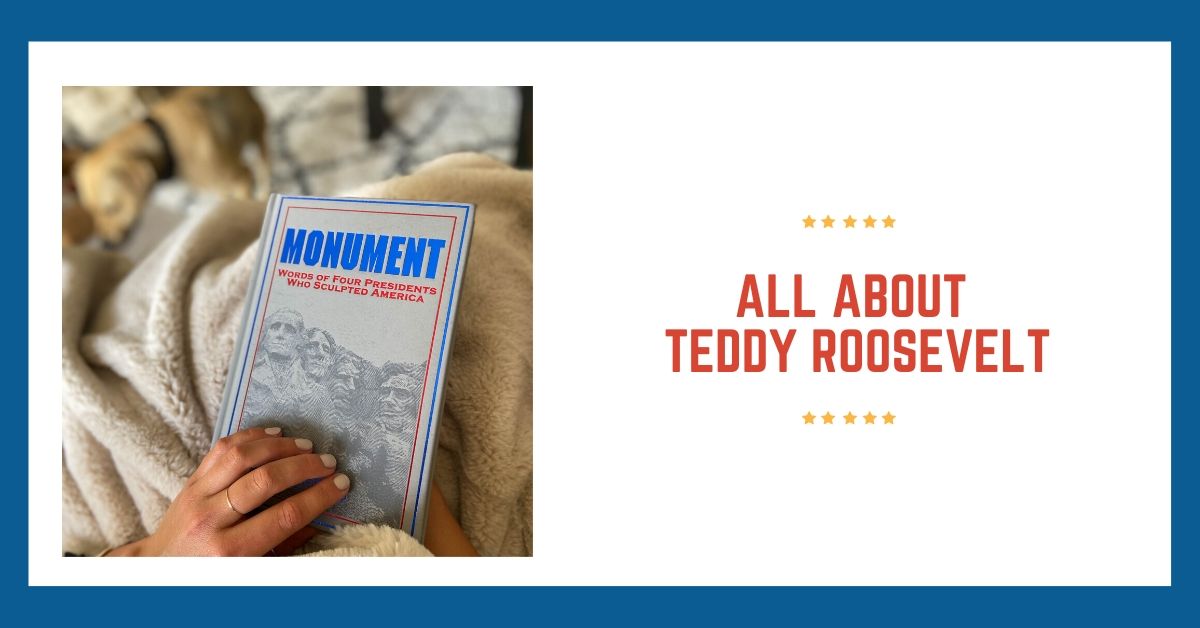
Of the four presidents whose faces adorn Mount Rushmore — subject of our brand-new Leather-Bound Classic, Monument: Words of Four Presidents Who Sculpted America — Theodore Roosevelt is probably the least known. He also led the most adventurous life of probably any president.
While a legendary outdoorsman, Roosevelt did pretty well for himself indoors, as well. He was a prolific writer, authoring 38 books over the course of his life. His first, The Naval War of 1812, was published when T.R. was only 23. Other books included his biography, a history of New York City, a biography of English politician Oliver Cromwell, a few about hunting, and The Winning of the West, a four-volume saga about the settlement of the American frontier.
Roosevelt had a horrible Valentine’s Day in 1884. Then serving as a New York state legislator, he rushed home after receiving news that his mother had died of typhoid fever. Just 11 hours later, and in the same house, Roosevelt’s wife, Anna, died of kidney failure, undetected during her pregnancy — she’d given birth to daughter Alice two days earlier.
Canterbury Classics has gathered historic documents penned by George Washington, Thomas Jefferson, Abraham Lincoln, and Theodore Roosevelt into this beautiful leather-bound volume.
In 1898, Roosevelt resigned his position as Assistant Secretary of the Navy…for active combat. When Cuba demanded independence from Spain, the U.S. sent troops to assist Cuban freedom fighters. Roosevelt led a hand-selected group of troops called the Rough Riders, who led a series of charges, including one up San Juan Hill, a pivotal victory for the Cuban-American alliance. Roosevelt would later call that occasion “the great day of my life.”
Football was extremely violent in the early 20th century, and effective safety gear was yet to be invented. More than 40 college football players died between 1900 and 1905, leading some schools to completely shutter their teams. President Roosevelt loved football, and didn’t want the sport to die. In 1905, he held a White House summit with football coaches and officials to discuss rule changes that would save lives and the game. Some of Roosevelt’s reforms: the forward pass, and calling plays dead and over when a player was tackled, ending deadly
pile-ons.
In 1901, after the death of President William McKinley, Vice President Roosevelt ascended to the highest office in the land. He left the White House in 1909, then decided to run as a third party candidate in 1912. On the way to the stage to deliver a stump speech in Milwaukee, a disgruntled barman shot Roosevelt in the chest at close range. It likely wouldn’t killed Roosevelt if not for his folded speech notes tucked into his breast pocket. And so, having just been shot and still suffering from a flesh wound — and bits of the bullet still in his chest — Roosevelt delivered his speech anyway. Only after he was done did he hit the hospital.








